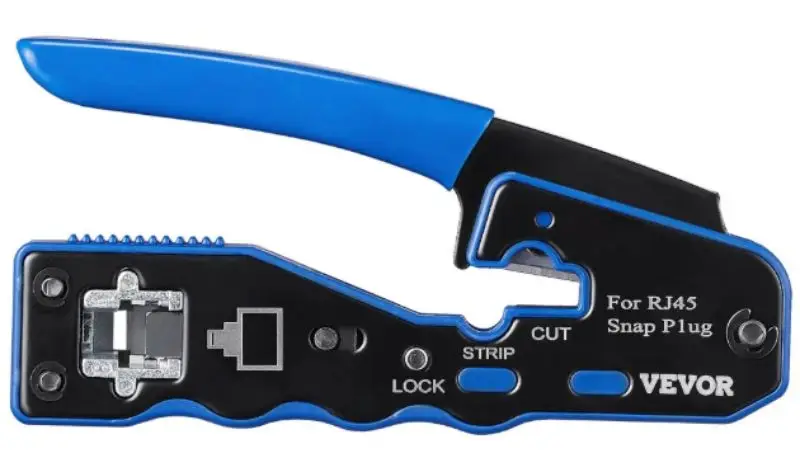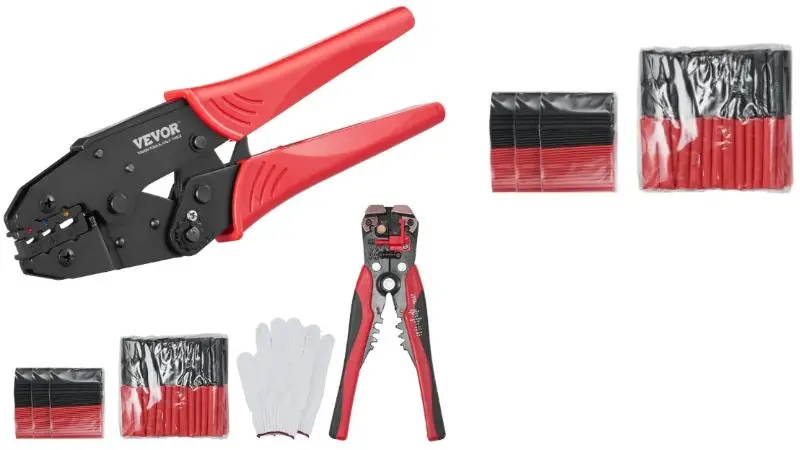Are you tired of struggling with tangled wires or damaged cables every time you try to do a simple electrical task? Knowing how to use a wire stripper properly can save you time, frustration, and even costly mistakes.
Whether you’re fixing something at home or working on a DIY project, mastering this tool will make your job easier and safer. Keep reading, and you’ll discover step-by-step tips that anyone can follow to strip wires like a pro—no experience needed.
Your next project is about to get a whole lot smoother.
Choosing The Right Wire Stripper
Using a wire stripper helps remove the insulation from wires safely. Picking the right tool makes the job easier and prevents damage.
Different wire strippers fit different wires. Knowing how to choose will save time and keep your wires intact.
Types Of Wire Strippers
Wire strippers come in several types. Each type works best for certain tasks and wire sizes.
- Manual Wire Strippers:Simple tools with fixed holes for wire gauges.
- Adjustable Wire Strippers:Can change size to fit different wires.
- Automatic Wire Strippers:Grip and strip insulation quickly with one hand.
- Electric Wire Strippers:Powered tools for fast stripping of many wires.
Choose a type based on how often you strip wires and the wire sizes you use.
Matching Stripper To Wire Gauge
Wire gauge shows the wire’s thickness. The right stripper fits the wire gauge to avoid cutting the wire.
Using the wrong size can damage the wire or leave insulation behind. Check the tool’s gauge markings before use.
| Wire Gauge (AWG) | Recommended Stripper Size |
|---|---|
| 22-18 | Small holes or adjustable to small size |
| 16-14 | Medium holes or adjustable to medium size |
| 12-10 | Large holes or adjustable to large size |
Always match the stripper hole to the wire gauge for clean stripping and safe work.

Credit: www.vevor.com
Preparing For Wire Stripping
Before you strip a wire, you must prepare carefully. Proper preparation helps you work safely and efficiently.
Getting ready includes having the right tools and making sure the power is off. This keeps you safe and avoids mistakes.
Gathering Necessary Tools
Collect all the tools needed before starting. This saves time and makes the job easier.
You will need a wire stripper, safety glasses, and a pair of pliers. Some jobs may also require a multimeter.
- Wire stripper with the right size slots
- Safety glasses to protect your eyes
- Pliers for holding or bending wires
- Multimeter to check electrical current
Ensuring Power Is Off
Always make sure the power is off before you start stripping wires. This prevents electric shock and injury.
Turn off the circuit breaker or unplug the device. Use a tester to confirm there is no electricity in the wire.
- Switch off the main power or circuit breaker
- Unplug the device if possible
- Use a voltage tester to double-check
- Never touch wires if you are unsure power is off
Step-by-step Wire Stripping Process
Using a wire stripper correctly is important for safe electrical work. This guide shows you how to strip wire insulation without damage.
Follow these steps to remove the insulation cleanly and prepare your wire for connections.
Measuring The Strip Length
First, decide how much insulation you need to remove. This depends on your project or connector size.
Use a ruler or the wire stripper’s guide to mark the correct strip length on the wire.
- Check your connector’s instructions for strip length
- Measure carefully to avoid stripping too much or too little
- Mark the wire lightly with a pencil if needed
Positioning The Wire Correctly
Place the wire in the wire stripper’s jaws at the marked strip length. The wire should be straight and centered.
Make sure the insulation fits into the correct notch for your wire size to avoid cutting the metal inside.
- Align the mark with the stripper’s cutting edge
- Use the right notch for your wire gauge
- Hold the wire steady to prevent slipping
Applying The Right Pressure
Squeeze the handles of the wire stripper firmly but not too hard. The tool should cut only the insulation.
If you press too lightly, the insulation will not cut. Too hard can damage the wire strands.
- Apply steady, even pressure
- Do not twist or pull while squeezing
- Practice on scrap wire to find the right force
Removing The Insulation Cleanly
After cutting the insulation, pull it off gently in one smooth motion. This exposes the bare wire without damage.
Check that no wire strands are cut or broken. The wire should be ready for your connection.
- Hold the wire firmly with one hand
- Pull the stripper away from the wire end
- Inspect the wire for any nicks or cuts

Credit: www.vevor.com
Safety Tips When Using Wire Strippers
Using wire strippers is common in electrical work. It is important to stay safe while handling these tools.
Follow basic safety tips to protect yourself from injury and damage.
Wearing Protective Gear
Always wear protective gear before using wire strippers. Safety glasses protect your eyes from flying wire pieces.
Gloves help protect your hands from cuts and electric shocks. Use gloves made for electrical work.
- Wear safety glasses or goggles
- Use insulated gloves for electrical safety
- Wear long sleeves to protect your arms
- Use closed-toe shoes to protect your feet
Avoiding Common Hazards
Check for live wires before starting work. Always turn off the power supply to avoid shocks.
Do not use wire strippers if they are damaged or worn. Keep your work area clean and dry to prevent accidents.
- Turn off power before stripping wires
- Inspect wire strippers for damage
- Keep your workspace free of clutter
- Avoid working in wet or damp places
- Cut wires slowly and carefully
Maintaining Your Wire Stripper
Keeping your wire stripper in good shape helps it work better and last longer. Regular care prevents damage and keeps it safe to use.
Proper maintenance includes cleaning, lubricating, and checking for wear. These steps keep your tool ready for every job.
Cleaning And Lubricating
Clean your wire stripper after each use to remove dirt and debris. Use a dry cloth or brush to wipe off dust and small particles.
Lubricate the moving parts with a light machine oil. This helps the tool open and close smoothly and prevents rust.
- Wipe blades with a dry cloth
- Apply oil to pivot points
- Remove excess oil to avoid dirt buildup
- Store in a dry place after cleaning
Checking For Wear And Damage
Inspect your wire stripper regularly for signs of wear or damage. Look at the blades and handles for cracks or dullness.
Replace or repair the tool if you find any problems. Using damaged tools can cause poor cuts or injury.
- Check blade sharpness and edges
- Look for rust or corrosion
- Examine handles for cracks or loose parts
- Test the tool’s movement for smoothness
Troubleshooting Common Wire Stripping Issues
Using a wire stripper can be tricky if you face common problems. These issues can cause damage to the wire or insulation.
Knowing how to fix these problems helps you work faster and safer. Focus on two main issues: insulation tears and wire damage.
Dealing With Insulation Tears
Insulation tears happen when the wire stripper cuts too deep. This can expose the wire and cause shorts or failures.
To avoid tears, adjust the wire stripper to the right size. Make sure the blades only cut the insulation, not the wire inside.
- Check the wire gauge and set the tool accordingly.
- Use gentle pressure to avoid cutting the wire.
- Strip the wire slowly for better control.
- Replace dull blades that can cause rough cuts.
Handling Wire Damage
Wire damage occurs if the wire strands break or get cut. This makes the wire weak and less reliable.
If you see damage, cut the wire end and strip it again carefully. Avoid pulling or twisting the wire while stripping.
- Use the correct wire stripper size for the wire.
- Hold the wire steady to avoid bending.
- Inspect the wire after stripping for any broken strands.
- Replace the wire if damage is severe.

Credit: www.amazon.com
Frequently Asked Questions
What Is The Purpose Of A Wire Stripper?
A wire stripper removes insulation from electrical wires without damaging the metal core. It ensures clean, precise stripping for safe connections and efficient electrical work.
How Do You Choose The Right Wire Stripper Size?
Select a wire stripper that matches your wire gauge. Using the correct size prevents wire damage and ensures effective insulation removal.
Can Wire Strippers Cut Wires As Well?
Yes, many wire strippers have built-in cutters. They allow you to cut wires neatly while preparing them for stripping.
How Do You Avoid Damaging Wires With A Wire Stripper?
Use the correct gauge setting and apply gentle pressure. Avoid squeezing too hard to prevent nicking or breaking the wire.
Conclusion
Using a wire stripper properly ensures safety and efficiency. Always choose the right tool for the wire type. Hold the wire firmly for a clean strip. Adjust the stripper’s size to avoid cutting the wire. Practice makes perfect, so try on scrap wire first.
Safety gear like goggles can protect your eyes. Remember to store your tools in a safe place. Regular maintenance keeps your wire stripper in top condition. Follow these tips, and you’ll strip wires like a pro. Happy wiring!
8 min read

